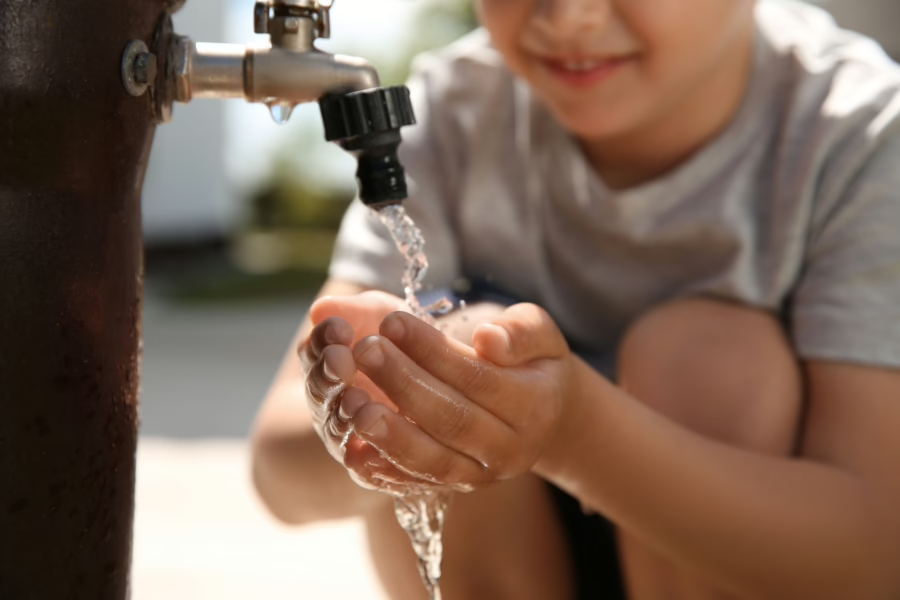Less than a month after releasing the American Rescue Plan, President Biden made history once again. On the last day of March, President Biden released the American Jobs Plan, which calls for an unprecedented $111 billion in water infrastructure investment. After decades of chronic underinvestment in the nation’s water infrastructure, the American Jobs Plan signals a stark contrast from the status quo. Looking back to 2019, the federal government was only meeting 37 percent of the nation’s total water infrastructure capital needs. The American Jobs Plan is a major and laudable step towards closing the growing federal water infrastructure investment gap.
The plan divides the $111 billion into three spending areas: $45 billion to eliminate lead pipes and services lines through the Environmental Protection Agency’s Drinking Water State Revolving Fund and Water Infrastructure Improvement for the Nation Act grant program, $56 billion in grants and low-cost flexible loans to states and Tribes to modernize aging drinking water, stormwater, and wastewater systems, and $10 billion to monitor and remediate PFAS (per- and polyfluoroalkyl substances) in drinking water and invest in small, rural water systems. These priorities echo policy proposals shared in the Alliance’s Recovering Stronger Federal Policy Blueprint, which calls for funding to replace lead service lines and to remediate PFOS and PFOA (two chemicals in the PFAS family).
As Congress looks to pass legislation allocating these funds, there is an important opportunity for bipartisanship. There is wide support from voters for funding to upgrade water and wastewater systems. According to the Value of Water Campaign’s annual index, support for water infrastructure investment cuts across party lines and region, as well as across race and gender. This support is consistent over time and, in March 2020, when the most recent poll was fielded, ensuring a reliable supply of water and addressing drinking water contamination were both ranked on par with eliminating COVID-19 as national priorities. In addition to there being wide public support for closing the federal water infrastructure investment gap, there are also many tangible benefits. And the Alliance is hopeful about the bipartisan support for water infrastructure in Congress. Even the infrastructure proposal advanced by Congressional Republicans in response to President Biden’s plan contains $35 billion for drinking water and wastewater infrastructure.
According to a recent report from the Value of Water Campaign and the American Society of Civil Engineers, closing the water infrastructure investment gap over the next 20 years would lead to the economy gaining $4.5 trillion in GDP, would create nearly 800,000 new jobs, and would increase disposable income by $2,000 per household. The American Jobs Plan holds great promise for communities across the nation, and the Alliance will be closely monitoring related legislation.
The Alliance is also looking towards the confirmation of Radhika Fox, who was formally nominated for the position of Assistant Administrator for Water. Fox was a Day One Presidential Appointee to serve as Principal Deputy Assistant Administrator for the Office of Water. The Assistant Administrator position is a Senate-confirmed position, and Fox’s hearing could be as soon as May.
In March, the Senate Committee on Environment and Public Works unanimously passed the Drinking Water and Wastewater Infrastructure Act (S. 914) out of committee. This month, the Senate continued its overwhelming bipartisan support for the bill, passing it with a vote of 89-2. The bill authorizes $35 billion in water infrastructure programs, notably including reauthorization of the Clean Water and Drinking Water State Revolving Funds and the WIFIA loan program. It also includes funding for grant programs to expand the water workforce, help utilities with climate resilience, and for lead service line removal.
Another key provision in the bill is a rural and low-income water assistance pilot program. The Alliance played a key role in the inclusion of the pilot program in the bill, coordinating across environmental justice groups, water utilities, and members of Congress. Thanks to continued collaboration with our network of allies, the assistance pilot program that was passed in the full Senate is even stronger than what emerged out of committee last month.
These developments are exciting for those in the water sector and beyond, but particularly for those who have worked tirelessly to bring water infrastructure into the spotlight. For years, water infrastructure, and those who lead and operate those systems, has been out of sight and out of mind. But thanks to leaders in the sector, including the Value of Water Campaign and its allies, water infrastructure is getting the attention—and the investment—needed to help build a sustainable water future.


